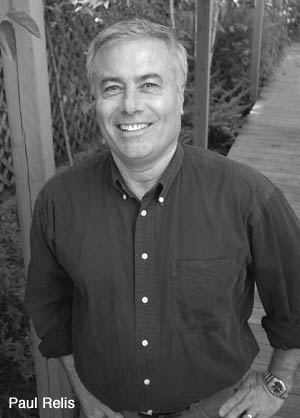Juicing the Dump
High Tech Plan to Convert Garbage to Electricity Gets Nod

It was one of those weird, mysterious moments when players accustomed to butting heads and locking horns stumbled accidentally into a state of agreement that could add decades to the life of the South Coast’s landfill, produce enough clean energy to power 3,000 households, keep methane out of the atmosphere, and increase recycling and diversion by about 75 percent.
First District Supervisor Salud Carbajal had just returned from a trip to Israel, where he visited a new garbage disposal plant pioneered by a retired Israeli Air Force colonel and his scientist brother. Excited by what he’d seen, Carbajal convened a special meeting of South Coast politicos and municipal waste officials representing both the City and County of Santa Barbara, two groups that normally agree on little but their mutual distrust. Maybe it was the audacity of the new technology-or perhaps weariness at the prospect of endless stalemate over the region’s growing garbage problem-but they managed to find common ground. Enough, in fact, that on 3/6, the City Council and the County Board of Supervisors agreed to pay the cost of hiring a project manager to see if a full-fledged trash-to-gas conversion plant could be installed at the Tajiguas landfill to the benefit of all parties. Although the exact cost of hiring this project manager remains unknown-it’s estimated to be around $150,000-the supervisors and councilmembers agreed to split the cost 50-50.
This is not the first such conversion plan proposed for Tajiguas; two years ago, the county identified a plan to create energy by cooking the trash that would normally be dumped there. But this thermal technology has elicited strong concern from key environmental players in Sacramento who worry about the potential for toxic air emissions. As a result, such technologies are not legally permittable in California.
But other conversion technologies, like that proposed by the Israeli-owned ArrowBio, rely on microscopic organisms, rather than heat, to convert the trash into gas, which can then be used to produce electricity. According to its champions, what makes ArrowBio unique is the company’s use of water. Unsorted trash is first dumped in pools of water, where the recyclables-aluminum, glass, and plastics-are sorted out by their buoyancy; what’s left is sheared by jets of water. Most of this soupy mass is then sent into 35 by 50 foot enclosed vats, where naturally occurring microbes release the methane lurking in this trash soup. This process can easily accommodate food scraps, dead carcasses, sewage sludge, and other organic materials that can’t be handled by other conversion technologies. The methane produced is then converted into electricity and sold back to the utility companies.
ArrowBio and its boosters-like Community Environmental Council boardmember Paul Relis, who represents a private trash company that serves 2.5 million customers throughout Southern California-say this process can divert about 80-85 percent of what now goes into the landfill. That’s a significant claim given that the landfill is scheduled to close in about 12 years, and that building a new one on the South Coast is estimated to cost about $100 million-$150 million.
Relis estimated it would cost about $24 million to build a conversion plant at Tajiguas capable of processing about half of the landfill’s current volume of 220,000 tons of trash per year. Depending on how marketable the soil amendment proves to be (currently, there’s no shortage of composted green waste and sludge on the market), Relis said such a plant could be built without increasing the tipping fees now charged at the landfill. Councilmember Das Williams and others have indicated that tipping fees could even go down. Presumably, it will be up to the new project manager the city and county hire to figure out if the ArrowBio promise is too good to be true or too good to pass up.


